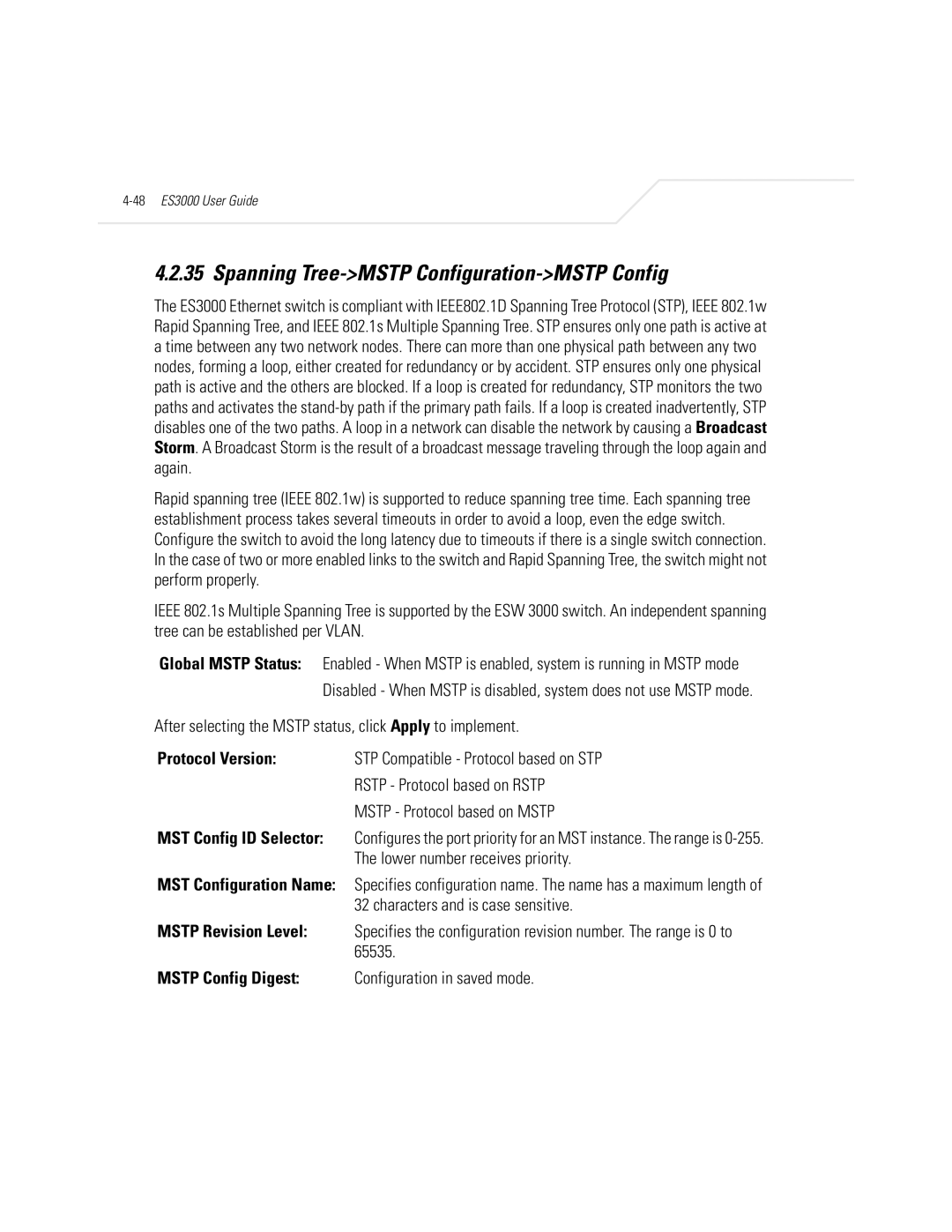4.2.35 Spanning Tree->MSTP Configuration->MSTP Config
The ES3000 Ethernet switch is compliant with IEEE802.1D Spanning Tree Protocol (STP), IEEE 802.1w Rapid Spanning Tree, and IEEE 802.1s Multiple Spanning Tree. STP ensures only one path is active at a time between any two network nodes. There can more than one physical path between any two nodes, forming a loop, either created for redundancy or by accident. STP ensures only one physical path is active and the others are blocked. If a loop is created for redundancy, STP monitors the two paths and activates the
Rapid spanning tree (IEEE 802.1w) is supported to reduce spanning tree time. Each spanning tree establishment process takes several timeouts in order to avoid a loop, even the edge switch. Configure the switch to avoid the long latency due to timeouts if there is a single switch connection. In the case of two or more enabled links to the switch and Rapid Spanning Tree, the switch might not perform properly.
IEEE 802.1s Multiple Spanning Tree is supported by the ESW 3000 switch. An independent spanning tree can be established per VLAN.
Global MSTP Status: Enabled - When MSTP is enabled, system is running in MSTP mode
Disabled - When MSTP is disabled, system does not use MSTP mode.
After selecting the MSTP status, click Apply to implement.
Protocol Version: STP Compatible - Protocol based on STP
RSTP - Protocol based on RSTP
MSTP - Protocol based on MSTP
MST Config ID Selector: Configures the port priority for an MST instance. The range is
The lower number receives priority.
MST Configuration Name: Specifies configuration name. The name has a maximum length of
32 characters and is case sensitive.
MSTP Revision Level: Specifies the configuration revision number. The range is 0 to 65535.
MSTP Config Digest: | Configuration in saved mode. |
